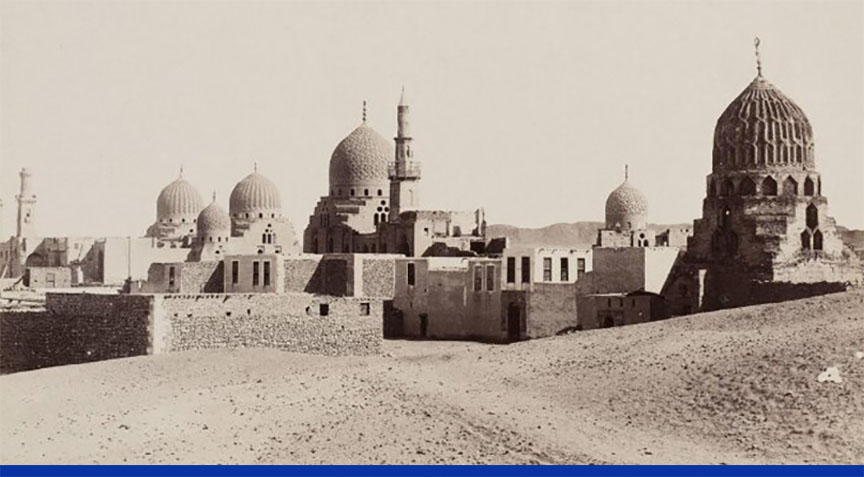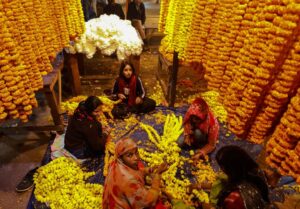
“The poor creature woke up at the sound of iron chains clinking all around him. It was such a bitter noise that he felt his eardrums perforate. As soon as he found consciousness, his first instinct was to run away from there, run away as far as possible from this hellish noise. He had no idea where or how far his tender legs would lead him, but as long as it was not in this place, it was fine. As he spontaneously wanted to get up and get going , he felt a binding sensation, like being glued to the spot. He tried to disengage himself but was unable to. He pulled and pushed with all his might, but in vain—the chain of despair was unbreakable! After some unfruitful attempts, panic got hold of him. Here was a boy who used to roam the open fields of central Asia, fields without boundaries as far as the eye could see. And now he was being restricted in his movements, which was against his nature. His breathing became fast as he was agitating. He was only hurting his wrists and ankles in this manner but what did it matter to him as long as he could be free. His face and nostrils were turning red, and he was releasing subtle cries of anguish, which became louder with time. He started to realize that every effort was futile, but he couldn’t make up his mind about it. Not knowing what to do and frustrated, he screamed at the top of his voice and kept doing so until someone came and thrashed him and sent him back to sleep.”
Above is an insight into the life of a slave in the medieval era. Young boys would be carried away to be sold into slavery, and they would then be integrated into the caste of Mamluks, slave warriors. These harmless kids would then be trained to become ferocious warriors.
Origins of the Mamluks
The term Mamluk means slave in Arabic. The Mamluk system is considered to have been a small-scale experiment of al-Muwaffaq, whose idea was to combine the slaves’ efficiency as warriors with improved reliability. The process of recruiting the Mamluks was very particular. In origin, the Mamluks were slaves that were captured during conflicts or bought from slave markets. They were captured from regions such as the Eurasian Steppe, the Caucasus, Kipchak Steppe, etc. Young boys were selected for their potential to become powerful and dreary soldiers who could carry out any task on demand. Some would even voluntarily designate themselves in hopes of better scope, as Mamluks typically received training, education, and a chance for social advancement within their new societies. Then the lot would be taken away to special military schools, where they would receive intensive training on warfare and the art of war. Mamluks were generally used in the Islamic world but there have been instances where European societies made use of them, as was the case with Napoleon Bonaparte, who used them to accomplish his military goals. Although many Caliphates and Muslim dynasties engaged Mamluks as soldiers, Egypt had to endure the most their exploits, which saw itself being governed by them in the long run.

Life of a Mamluk
As mentioned earlier, Mamluks were enrolled into the organization early on. Some were captured during raids, while others were bought from slave dealers. They were raised in the barracks of the Citadel of Cairo. The Mamluks were taught loyalty and sense of obedience. Once they were assigned to a master, they owed him their lives. Mamluks were like puppets, devoid of any sympathy or feelings. Even though they were accompanied, they led an austere life. The training of a Mamluk consisted of fencing, horse-riding, archery, handling of a spear, hand-to-hand combat, working as a team, etc. Mamluks were taught military discipline, war strategy and ethics of being a warrior. The formation of a Mamluk was very intensive and rigorous. Only the toughest of them could survive the ordeals. Once their training was completed, they were integrated into the army, composed solely of Mamluks. There they served the Sultan or emir. Many Mamluks were appointed or promoted to high positions throughout the empire, including army command. At first, their status was non-hereditary. Sons of Mamluks were forbidden to follow the role of their father. Mamluks lived within their garrisons and mainly spent their time with each other. Their recreations included sporting events such as archery competitions and presentations of horseback combat skills at least once a week. In this way, under the guise of entertainment, they reinforced their capabilities in combat and real life melee.
From Slave to Sultan
The Mamluks first served the Ayyubid dynasty before taking over Egypt as it’s masters. This process took place gradually, with it’s roots lying in the treatment of the Mamluks by the Ayyubids. The Mamluks, as slave soldiers, were often mistreated by the Ayyubid rulers, despite their crucial role in maintaining the Sultanate’s power. This courtesy was remembered by the Mamluks . But it would be improper to suggest that this was the sole reason for their betrayal vis-a-vis the Ayyubids. The Mamluks were powerful cavalry warriors, mixing the practices of the Turkic steppe peoples from which they were drawn and the organizational and technological sophistication and horsemanship of the Arabs. The Mamluks, being a powerful military elite, gradually gained more influence and control within the Ayyubid state. Over time, they became increasingly ambitious and sought greater power for themselves, which led to conflicts with the Ayyubid rulers. Dissent within the Ayyubid dynasty also presented itself as an opportunity for the Mamluks. Finally, the day came when the Mamluks took possession of power from the hands of the Ayyubids, who faded away into oblivion. In 1250, when the Ayyubid sultan as-Salih Ayyub died, the Mamluks he had owned as slaves murdered his son and only heir al-Muazzam Turanshah, and Shajar al-Durr the widow of as-Salih, became the Sultana of Egypt. Although she became Sultana with the support of the Mamluks, it was all a farce. Soon after, the Sultana had to marry the Mamluk chief Izz-al-Din Aybak and had to abdicate, thereby legitimizing his reign. The Mamluks consolidated their power over the years and eventually established their own dynasty which came to be known as the Bahri dynasty.

The End
The Mamluk Sultanate ruled Egypt and parts of the Levant( Syria, Palestine and Lebanon) for almost 260 years, until the Ottomans came and beat them during the ‘Siege of Cairo’ in 1517. The Ottomans successfully besieged Cairo, the Mamluk capital, and defeated the remaining Mamluk forces, leading to the surrender of the city and the formal end of Mamluk rule in Egypt. But it wasn’t just over yet! While the Mamluk Sultanate officially ended in 1517 with Ottoman conquest, a faction of the Mamluks known as the ‘Mamluks of Egypt’ continued to exist as a military and political force in Egypt for several more centuries. But finally, it took a snake to put an end to the Mamluk caste once and for all. In 1811, Muhammad Ali Pasha al-Mas’ud ibn Agha invited the remaining Mamluk leaders to a celebration at the Cairo Citadel as a gesture of reconciliation. However, it turned out to be trap, and Muhammad Ali’s personal army massacred the Mamluk leaders all at once. It is said that only one out of 700 people survived the ambush. This lowly and fatal ambush was known as the ‘ Massacre of the Citadel’. During the following week of the ambush, about 3,000 Mamluks and their relatives were killed throughout Egypt, by Muhammad’s regular troops. This marked the end of the Mamluks, or did it? Because, despite Ali’s destruction of the Mamluks in Egypt, a party of them escaped and fled southward. Jesus, won’t they ever die ? It is said that these survivors established a state at Dunqulah in the Sennar as a base for their slave trade. The Pasha had to yet again send 4,000 men to exterminate the remaining Mamluks. Man, what’s wrong with this guy? He sees the Mamluks as pests that need to be completely eradicated in order to protect the harvest. He wanted their extinction or what? Anyway, it is safe to assume that after this, they no longer had the opportunity to make themselves heard.






